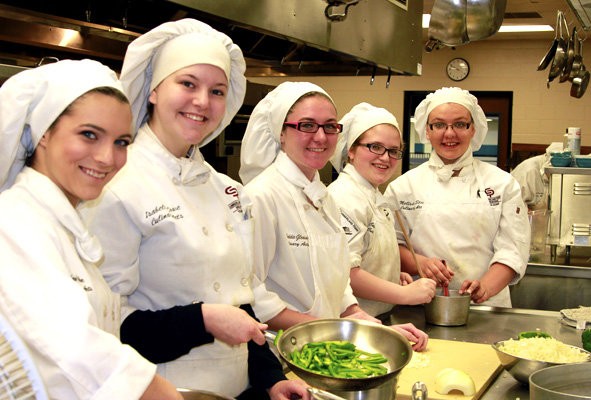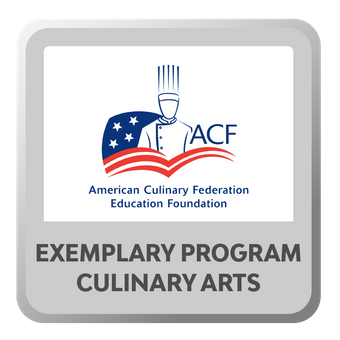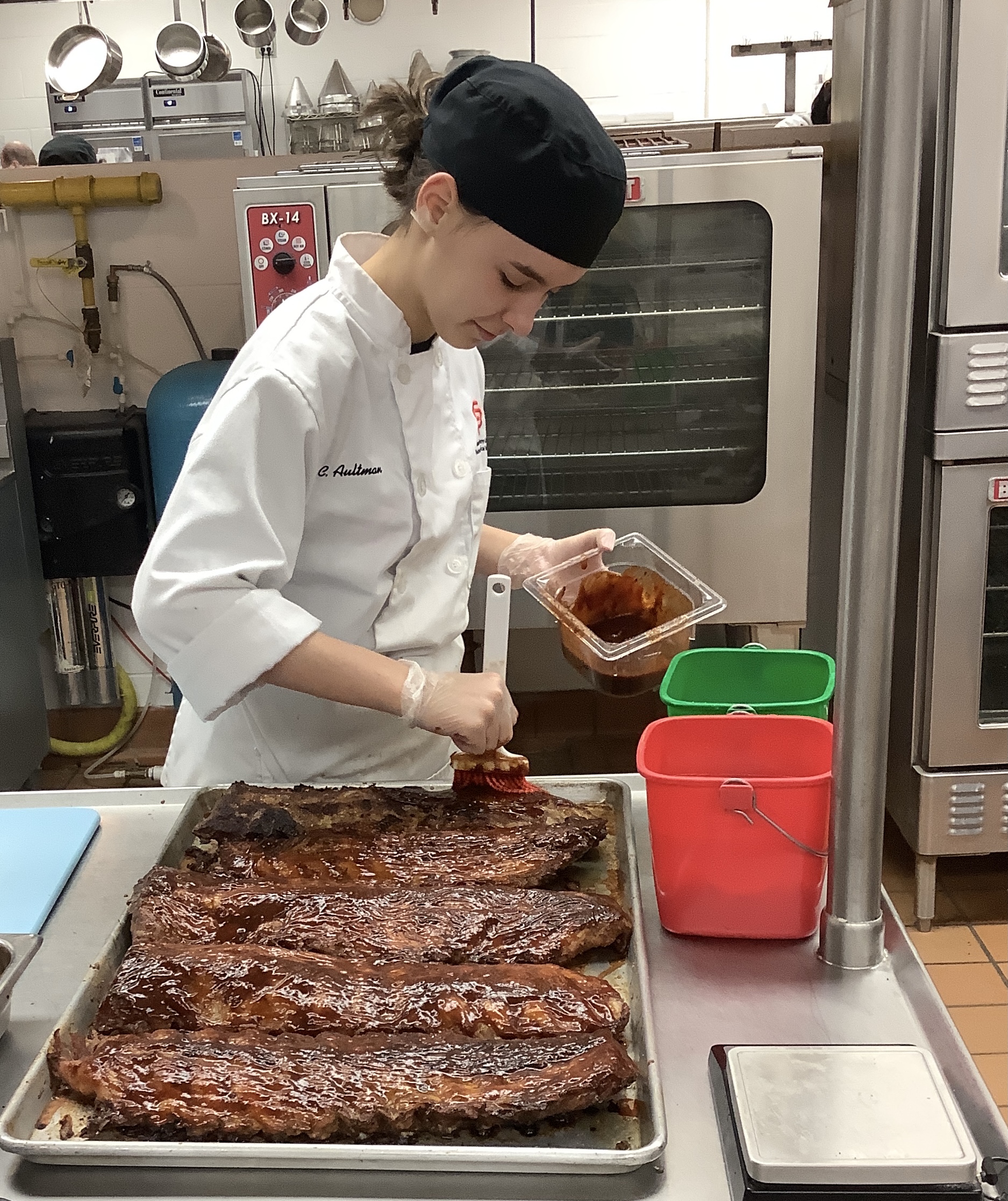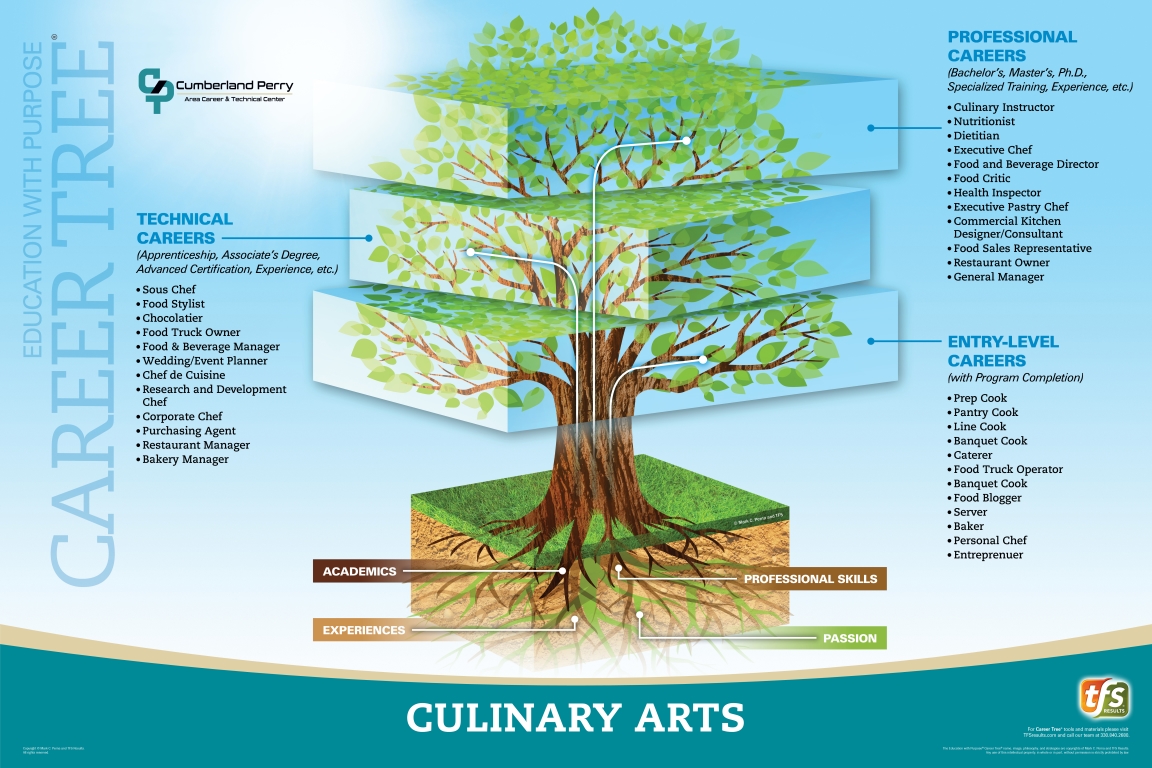Culinary Arts
What is Culinary Arts?
Culinary Arts is a program that offers a broad range of skills and knowledge concerning the selection, preparation, and handling of foods. Skill development will center around: safety and sanitation; dining room service; preparation of food; buffet service; meat cutting; baking; store room procedures; and basic management skills. Unlike the home economics courses offered by most general high schools, the instruction and on-the-job training will be conducted in a fully equipped, student-run kitchen and restaurant at Cumberland Perry Area CTC--the Cumberland Cafe! Culinary Arts students will also have the opportunity to be placed in a culinary establishment during their third year; this individualized arrangement gives the student the chance to obtain entry-level experience. For a student who is eager to learn and work, there is unlimited opportunity for employment and advancement in the Culinary Arts industry. The Culinary Arts program is accredited by the American Culinary Federation.

Program Accredited by


Is it for You?
Students seeking admission into this program should enjoy cooking and baking, as well as working with others (since so many of these jobs involve dealing with the public, tact, courtesy, and a pleasant personality are important). Culinary Arts production workers cook and serve food, mix and serve drinks, and do many other related tasks. The work is often hectic, and the ability to work efficiently under pressure while maintaining and event disposition and a sense of humor is necessary. Culinary Arts and production workers make up one of the largest occupational groups in the nation's labor force. Working conditions vary from small, noisy restaurants to elegant nightclubs, and working hours vary by establishment and type of service performed. However, they generally work long, irregular hours to suit customers' needs, including weekends and holidays. In addition, the following skills are a must for professionals in the field:
Good physical stamina and coordination.
A neat, clean appearance.
A keen sense of smell.
Good eyesight, either naturally or with correction.
The ability to communicate and work well with others.
Average math ability and measurement skills.
Program Objectives
| Level 1
POS TASKS:
|
Level 2 Certification: ServSafe
POS TASKS:
| Level 3
POS TASKS:
|
What's Next?
Potential Career Pathways
* Salaries listed are PA state averages taken from www.onetonline.com and are accurate as of 2020.
Chefs/Head Cooks ($59,040)
Food Service Manager ($55,320)
Restaurant Cooks ($26,770)
Butchers & Meat Cutters ($33,140)
Cooks & Cafe's ($30,090)
...and many more
Post-Secondary Studies
*Many employment options in this field require additional study.
HACC: Baking & Pastry Arts Certificate, Culinary Arts/Catering
YTI: Culinary Arts/Restaurant Management, Pastry Arts
Culinary Institute of America: Culinary Arts, Baking & Pastry Arts, Food Business Management


